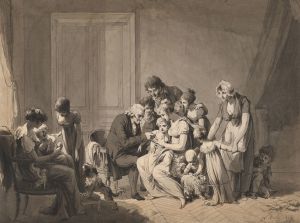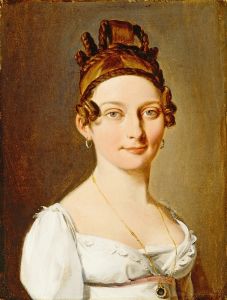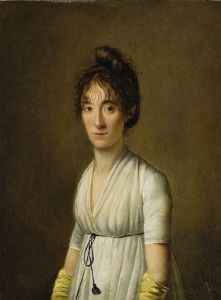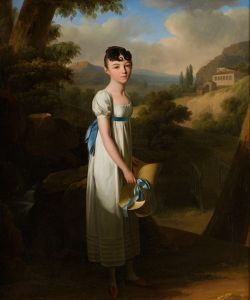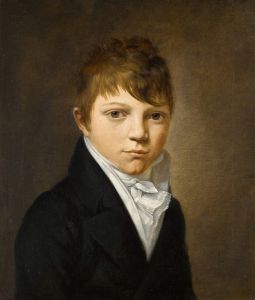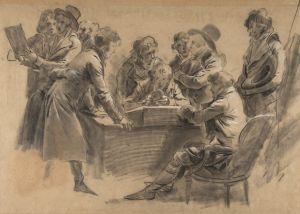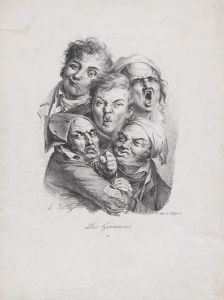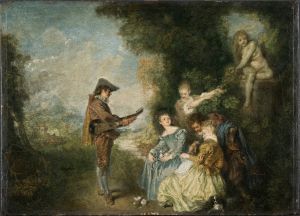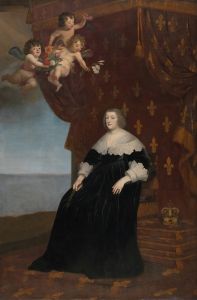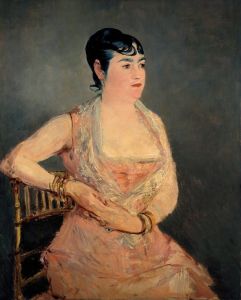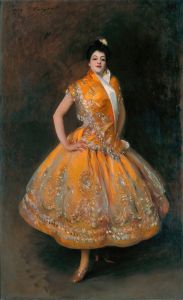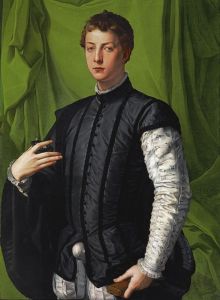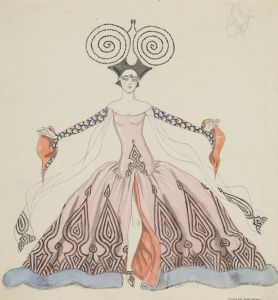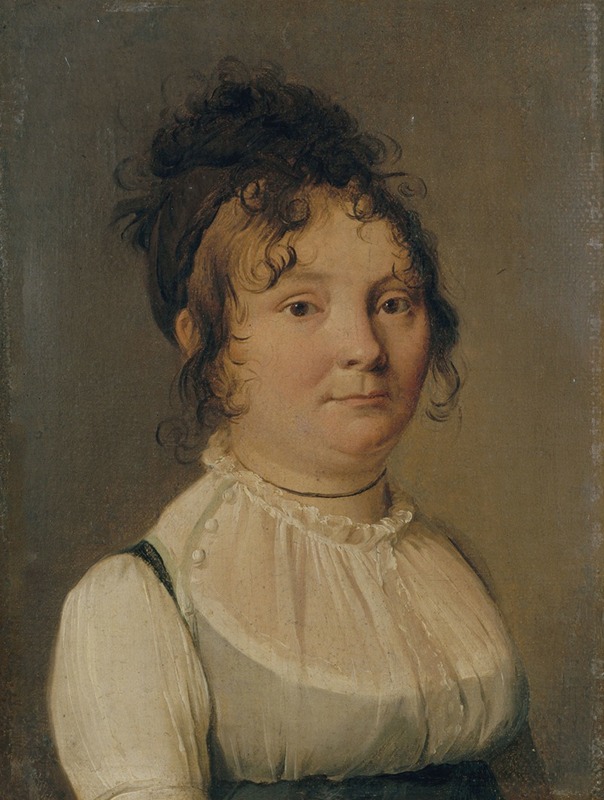
Portrait de Madame Corsse
A hand-painted replica of Louis Léopold Boilly’s masterpiece Portrait de Madame Corsse, meticulously crafted by professional artists to capture the true essence of the original. Each piece is created with museum-quality canvas and rare mineral pigments, carefully painted by experienced artists with delicate brushstrokes and rich, layered colors to perfectly recreate the texture of the original artwork. Unlike machine-printed reproductions, this hand-painted version brings the painting to life, infused with the artist’s emotions and skill in every stroke. Whether for personal collection or home decoration, it instantly elevates the artistic atmosphere of any space.
"Portrait de Madame Corsse" is a painting by the French artist Louis Léopold Boilly, who was known for his detailed and realistic portraits as well as his genre scenes depicting everyday life in France during the late 18th and early 19th centuries. Boilly was born on July 5, 1761, in La Bassée, France, and he passed away on January 4, 1845, in Paris. His career spanned a period of significant political and social change in France, including the French Revolution, the Napoleonic era, and the Bourbon Restoration.
Louis Léopold Boilly was a prolific artist, producing thousands of works over his lifetime. He was particularly noted for his ability to capture the nuances of facial expressions and the subtleties of light and shadow, which brought a remarkable sense of realism to his portraits. Boilly's works often reflected the bourgeois society of his time, and he was adept at portraying the fashions and interiors of the period with great accuracy.
The "Portrait de Madame Corsse" exemplifies Boilly's skill in portraiture. Although specific details about the sitter, Madame Corsse, are not widely documented, the painting itself provides insight into her status and personality. In this portrait, Madame Corsse is depicted with a serene and composed expression, suggesting a sense of dignity and poise. Her attire and the background elements of the painting likely reflect the fashion and interior design trends of the early 19th century, which Boilly meticulously rendered in his works.
Boilly's portraits were highly sought after by the French bourgeoisie, who appreciated his ability to capture their likenesses with both accuracy and elegance. His attention to detail extended to the textures of fabrics, the play of light on different surfaces, and the subtle expressions of his subjects, all of which contributed to the lifelike quality of his portraits.
Throughout his career, Boilly received several honors and accolades. He was admitted to the prestigious Académie des Beaux-Arts in 1833, and his works were exhibited in the Salon, the official art exhibition of the Académie des Beaux-Arts in Paris. Boilly's contributions to the art world were recognized not only for their technical excellence but also for their documentation of the social and cultural milieu of his time.
"Portrait de Madame Corsse" is a testament to Boilly's mastery of portrait painting and his ability to convey the character and status of his subjects through his art. The painting remains an important example of Boilly's work and continues to be appreciated for its artistic and historical significance.
In summary, Louis Léopold Boilly's "Portrait de Madame Corsse" is a fine example of the artist's portraiture, showcasing his skill in capturing the likeness and essence of his subjects. While specific details about Madame Corsse herself may be limited, the painting stands as a representation of Boilly's talent and the cultural context of early 19th-century France.






